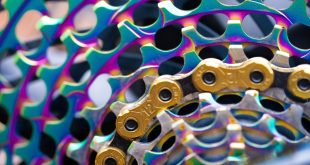BY TONY HADLAND
Lauterwasser was the son of a Bavarian who in the late 19th century emigrated first to France and later to England. Jack was raised in London and always pronounced his name as a Cockney would (Lorterwasser, with the "w" pronounced the English way). He was born in 1904. His parents lived in poor housing just off Oxford Street, London, where they ran a pie shop.
His father was repatriated to Germany when the First World War broke out, leaving Jack to help his mother raise his siblings. The family moved to furnished rooms in Highbury, where Jack rode a tradesman’s bike for the local grocery store.
Towards the end of the war he joined Finsbury Park Cycle Club and won a 25 mile road race before his 14th birthday. In 1924, he broke the RRA 50 mile record.
In 1928 Jack won a silver medal in the 160km road race event at the Amsterdam Olympics. He rode to and from Amsterdam. In the same year he also broke the 50 and 100 mile RRA records.
Jack learned how to build wheels in his teens but in 1929, with Olympic and record-breaking success behind him, he set up his own cycle shop in Holloway Road, London, and marketed his own brand of bikes.
His "Lauterweight" brand specialised in racing machines, the lightest of which was 17.5 lbs. Older cyclists still ride with shallow-dropped ‘Lauterwasser handlebars’, which were widely specified by other makers.
Running his own firm in the 1930s proved financially difficult, so he closed down and joined Rudge to revitalise their sports models. During WWII he worked at BSA, who made military folding cycles – the so-called Parabikes.
Thereafter he moved to Raleigh and was with them as a rep through the 1950s and early 1960s. Against the background of the early 1950s steel shortages, he designed and prototyped at least two open-frame bicycles with conventional-sized wheels. His idea was to save metal, by mass-producing the cruciform frames out of a pair of thin steel pressings, seamed together. However, nobody took and ran with the idea.
Jack was fascinated by gearing systems and his time at Raleigh gave him easy access to Sturmey-Archer across the road. That company had patented five-speed hubs in the 1930s and prototyped one during the war. (Whilst riding one day, Jack met H.H. England test riding it.) However, Sturmey did not market a five-speed until the mid 1960s. Long before that, Jack worked out how to convert S-A’s four-speeds into fives and published details in the CTC magazine. Raleigh was not amused and told him to desist.
In 1965 Jack joined Alex Moulton to run the "S" unit, making the high-end versions of the industry-saving F-frame dual suspension small-wheeler. Jack stayed with Alex until he was knocking on 90, building wheels for the AM range. Though the two men were from completely different social backgrounds, there was a deep mutual respect between them. When Jack’s beloved wife Amy died, Alex offered Jack a cottage on his estate – an offer that touched
Jack, although he chose to stay in his own bungalow in Bratton.
About 1980, Jack devised for his own use an unusual gearing system: a wide-ratio, single-lever, fully indexed, 10-speed gear system for one of his own Moultons. This used a five-speed Shimano Positron rear derailleur, the block of which was brazed onto the driver of a two-speed Fichtel & Sachs hub gear (from which the coaster brake had been removed) operated by slight backpedalling. Jack had carefully worked the ratios out to give an unusually evenly spaced set.
He took part in the testing of the AM spaceframe bikes before their launch in 1983 and considered them a significant improvement on the original. When later the New Series was launched, Jack particularly appreciated the slightly larger wheel size (nominally 20", though actually about 18.3").
Throughout his life Jack loved cycle touring most of all. Even when he was about 80 years old, he would take out the new AM out for a "quick spin" of 80 miles or so. Nonetheless he always insisted that the important thing was not the miles ridden but the miles enjoyed.
His final machine was an AM fitted with a 7-speed Shimano hub gear, geared low. Sadly he had a fall when 92 and did not ride again. He had many friends among local club riders in the Bath area. For example, Reg Randall, former End-to-End record holder, looked after Jack’s garden for him.
Jack was a wonderful man who spanned the era from the Pedersen to the New Series Moulton. A great innovator, he had little interest in cycle history, savouring instead every genuine technical advance in cycling. He wasn’t a cycle historian – he was cycle history incarnate.
Jack was married to Amy Sibthorpe, who died in 1988. He is survived by a son and a daughter.
 BikeBiz Bicycle and cycling retail news
BikeBiz Bicycle and cycling retail news



